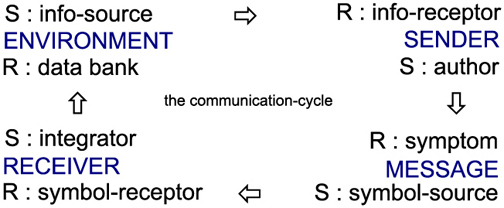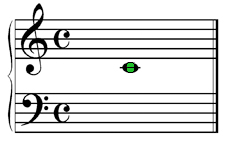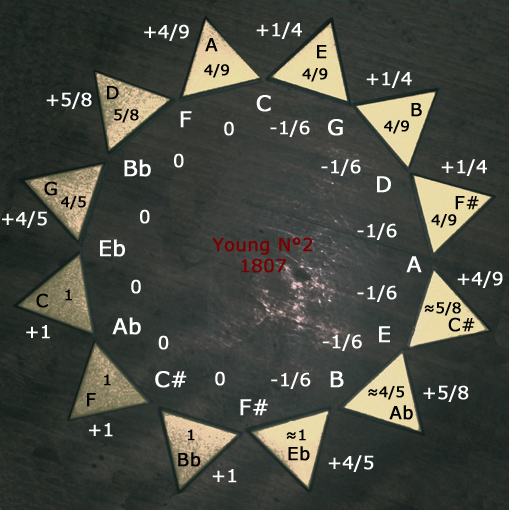Communicational Musicology
Musicology, the study of music,
the rational
meta-language of music, stands outside the creative process itself
and so is able to provide a clearer perspective on its end product,
a musical work or opus. This view also involves
the social & cultural contexts within which this opus is situated.
Central in the communicational approach followed here, is the study
of music as a process of communication as given by the
following superstructure (or organisation of meta-language) :

While the Ars Inveniendi
focuses on the process of discovery (or the generation of an opus), communicational musicology is interested in understanding the
complete cycle of communication involved, encompassing generation (sender),
production (message), reception (receiver) and assimilation
(environment) of an opus. While this process covers
communication in general, my aim is to apply it to the phenomenon of
music.
The musical phenomenon is (a) auditive, (b) communicational, and so
(c) language-based. In the latter sense, music may be divided in
semantics, syntax & pragmatics. As a system of language, it
manipulates signs, and so symbols, signals & icons. The special
feature of the musical language involves the absence of denotative symbols or
signs denoting empirico-formal objects. Indeed, music is per definition non-conceptual,
although one may try to project a programmatic, descriptive,
discursive, conceptual intent on it. Although making use of symbols,
they are connotative only. Indeed, the denotative
semantic of programmatic music is never as precise as formal & natural languages deriving
meaning by using direct symbols to denote state of affairs
(so-called "public indexicals").
However, when
music works together with words (spoken or sung), denotation is
indirectly integrated. Because the distinction between instrumental music
and vocal music is merely theoretical, on may say music is a fully equipped
language, although it remains to be said its semantic intent is not
to convey precise & direct denotative content, but privileges connotative
semantic fields. And yes, instrumental music, viewed as a genre on
its own, has no explicit denotation whatsoever. Its symbols
are therefore totally connotative.
►
Neurophilosophy of Sensation
As music is an auditive
phenomenon, involving the pressure of air, the study of music calls
for the understanding of the neurophysiological processes involved,
in particular those dealing with establishing musical meaning. The
reader is referred to my
Neurophilosophical Studies and the
Neurophilosophy
of Sensation mentioned in the list above.
•
smell
:
transduction of chemical stimuli (odorants) by temporal coding (the precise timing of
spikes) ;
•
taste :
transduction of chemical stimuli by membrane potential changes, either
depolarizing or hyperpolarizing (voltage shift) ;
•
touch :
transduction of mechanical and chemical stimuli by membrane potential changes &
mechanoreceptors (with mechano-sensitive ion channels ?) ;
•
audition :
transduction of mechanical energy by a change in membrane polarization ;
•
sight :
transduction of electromagnetic radiation by a change in membrane polarization.
►
Epistemology of Aeasthetics
Pre-critical epistemology rooted
in the possibility of knowledge and its development in a
self-sufficient ground outside knowledge, either in terms of a
"reality-as-such" (ontological realism) or as an "ideality-as-such"
(ontological idealism). These systems gave rise to positivism,
scientism, materialism (on the side of the reification of the
object) or to spiritualism and idealism (on the side of the
reification of the subject). These approaches have been critically
rejected by criticism, rooting cognition in nothing else but
cognition itself.
This epistemological framework has been elaborated in :
Prolegomena or the
Rules of the Game of 'True' Knowledge (1994, Dutch),
Knowledge
(1995, Dutch),
General Cognitive Features of the Ante-rational Mind (2003),
Clearings : On Critical Epistemology
(2006),
Intelligent Wisdom : from Myth to
Nondual Thought (2007),
Neurophilosophy of Sensation
(2007) and
Criticosynthesis
(2008). The interested reader will find what needed there.
Applying this critical
epistemology to General Aesthetics was the object of
Sensations : a Formal Sketch of a Critical Esthetics (2007), a
work on Critical Esthetics reworked in this section of the webside
as Aesthetics
of Music (2013).
► Ontology of
Musical Aeasthetics
To situate metaphysics in general,
and ontology in particular, given critical epistemology, was tackled
in my
Critique of a Metaphysics of Process
(2012). A process metaphysics was
developed, one avoiding both ontological realism & ontological
idealism. The ontological principal being the actual occasion
(cf.Whitehead).
The application of process
metaphysics to musicology gives rise to the notion "musical moment"
("moment musical", "musikalischen Moment"), and its
multi-dimensional structure (pitch, rhythm, dynamic, timbre,
horizontality, verticality & integrality). The aim being understanding the
quantity, quality, relation & modality of the musical moment.
This moment is a set of actual occasions, the smallest unity of
ontology, the ontological principal. An actual occasion comes
together with other actual occasions, forming events. Events too
bind, forming entities or objects.
In process ontology, this smallest unit, the "actual occasion" was
defined by
Whitehead (1861 - 1947)
in his "quantum ontology"
(Process & Reality, 1929), a theory of what is shared by all
existing things in harmony with cosmology, biology and quantum
mechanics.
(a) actual occasion ox,
an instance of the set of actual
occasions O = {o1, ... om},
is an atomic
& momentary actuality characterized by "extensiveness" ;
(b) event ex,
an instance of the
set of events E = {e1, ... en},
is the togetherness of actual occasions, and
(c) entity
enx,
an instance of the set of entities
En
= {en1, ... enp},
is the togetherness of events, while "entity" or "object" are synonymous.
Extensiveness is what
all actual occasions
have in common. This
extensive plenum of the actual continuum of each actual occasion is :
(a) spatial : as in the case of geometrical
objects ;
(b) temporal : as in the case of the duration
of mental objects ;
(c) spatio-temporal : as in the case of the
endurance of sensate objects like musical phenomena.
Entities and events are
actual occasions interrelated in a determining way in one
extensive continuum, and an actual occasion is a limiting type of
an event with only one member.
Nature is
built up of these actual occasions. Events are aggregates or compounds of
actual occasions. Entities are
aggregates or compounds of events. When an aggregate or compound forms a
society, a higher-order self-determination is at hand, a marker to
distinguish non-individualized & individualized aggregates (or
societies). Indeed, societies are aware of themselves, while mere
compounds or non-individualized aggregates are not (a stone is not
aware of it being a stone, while minerals, plants, animals & human
systems are, each in its own degree).
An actual occasion is
an atomic
& momentary actuality characterized by "extensiveness".
Although indivisible, an actual
occasion is not a "little thing", but a meaningful (creative)
momentary differential change "dt", explained in terms of efficient
& final determinations. These act as the two state-vectors of all
changes in all the processes involving all actual occasions
conserved in the interval or isthmus "dt" of the present moment M of
the world (defined as M.t + dt).
Indeed, each actual occasion is the smallest possible
interval and has itself a twofold structure.
"Efficient determination" is physical momentum & mass of the
particles, waves, fields and forces at hand (matter). "Final determination" is
functional organization (information) and
self-determination, creativity, valuation and the experience of
conscious unity (consciousness), entering efficient causality & producing novelty.
►
The Categories of the "Moment Musical"
The musical moment is the musical principal of communicational
musicology. It forms a particular set of events (or sets of actual
occasion) determined by the efficient determination of the vibration
of air molecules and the final determination given rise to musical
structure (information) and meaning (consciousness). Because of the
latter, the musical moment is not mere noise, but sound. This
smallest of musical events has temporal (duration) and spatial
characteristics. In a general sense, it may be said to be seven
dimensional, for every musical moment has efficient & final
determinations :
Efficient (material) determinations of the musical moment :
1. pitch : frequency of sound waves, in particular notes ;
2. rhythm : periodicity of the notes, their duration ;
3. dynamic : intensity, velocity of notes ;
Final (informational, formal) determinations of the musical moment :
4. horizontality : relationships or togetherness of this note with
the one before and the next ;
5. verticality : the togetherness of this note with the
one sounding above or below ;
Final (sentient, kinetic) determination of the musical moment :
6. color : timbre, sonance or tone quality given by the overtones of
the musical moment ;
7. form : the total journey, logical and of continuous emotional
appeal, formative principle allowing parts of an object to form a
unity.
The smallest physical unit of music, the tone, is not identical with
the musical moment. Although it defines the material shape of this
moment, its efficient, causal or objective vector, it does not give
insight in the finative, simultaneous or subjective vector, given by
counterpoint (horizontality), harmony (verticality) and
orchestration (tone color).
► From Postmodernism to Hypermodernism
Traditional musicology was rooted in positivism and its realistic
ontology. Communicational musicology, rooted in critical
epistemology, integrates the deconstruction of modernism introduced
by the double coding of postmodernism. It also assimilated its
multi-culturalism and historical awareness. This brings about a
hypermodernism, avoiding the irrationalism & relativism of
postmodern analysis, leading up to a balanced view on knowledge,
being and the various fields of culture, in particular music. This
phenomenon is therefore viewed as a communicational process.
►
Ars Inveniendi - the Farben Project
The question of discovery is also important. In the past, musical
composition, the actual art of generating works of music, was deemed
too subjective to be the object of any scientific study. This is
however not the case. Although subjective, the art of invention also
has objective characteristics, and the study of these contributes to
creativity, the flowering of consciousness.
The Farben Project is a study of musical color, and is intimately
related to the conscious apprehension of music and therefore links
with the psychological & spiritual impact of music on the listener.
Related to the phenomenon of synesthesia, we find historical
examples of it in the works of Telemann, Beethoven, Wagner, Liszt,
Debussy, Scriabin & Schönberg (who introduced the concept of
"Klankfarbenmelodie").
►
Musical Studies & Musical Works
To back the Farben Project, I also focus on
specific composers, in particular Telemann, Mozart, Wagner &
Scriabin. Telemann because of his gigantic output, personal style and harmonic
genius backing an orginal view on tone color. Mozart because of his
focus on melody, the heart of music. Wagner because of his
originality, inventing chromatism and the idea of a
"Gesamtkunstwerk". Finally Scriabin, as he developed the intimate
relationship between color, psychological impact and spiritual
emancipation (thanks to music), i.e. psycho-acoustics.



